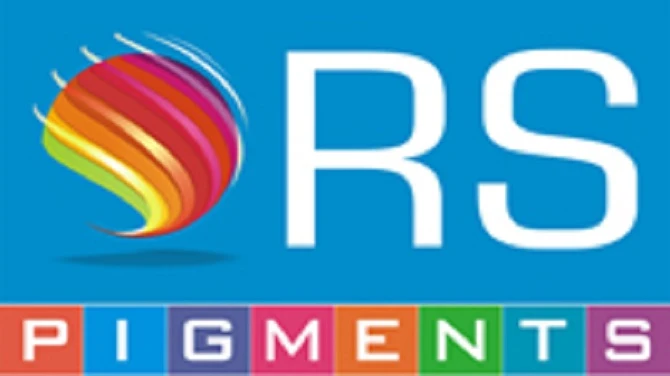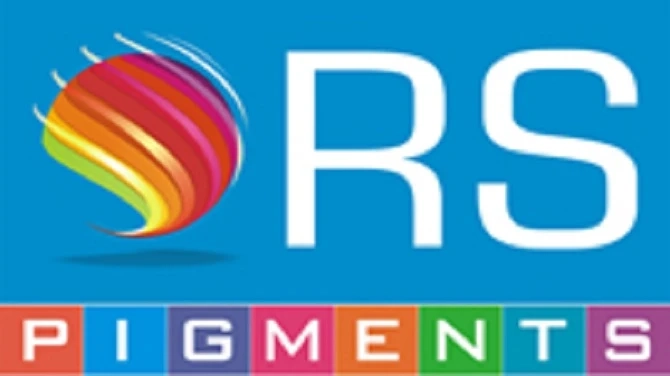 Oftentimes, the key to maximizing profitability in the export management of ultramarine blue pigments lies in a comprehensive understanding of market dynamics, supply chain logistics, and trade regulations. In this blog post, we will delve into the intricacies of effectively managing the export of ultramarine blue pigments, exploring strategies to optimize sales, minimize costs, and navigate potential barriers to entry. By leveraging our expertise in this niche industry, we aim to provide valuable insights that will empower businesses to elevate their export management practices and achieve greater profitability.
Oftentimes, the key to maximizing profitability in the export management of ultramarine blue pigments lies in a comprehensive understanding of market dynamics, supply chain logistics, and trade regulations. In this blog post, we will delve into the intricacies of effectively managing the export of ultramarine blue pigments, exploring strategies to optimize sales, minimize costs, and navigate potential barriers to entry. By leveraging our expertise in this niche industry, we aim to provide valuable insights that will empower businesses to elevate their export management practices and achieve greater profitability.
Understanding Ultramarine Blue Pigments
Ultramarine Blue pigments are a group of inorganic pigments known for their vibrant blue color and exceptional lightfastness. They have been used for centuries, and their unique properties make them a popular choice in various industries, including cosmetics, paints, plastics, and printing inks. Understanding the production process, characteristics, and applications of Ultramarine Blue pigments is crucial for effective export management and maximizing profitability.
Production and Characteristics
Characteristics of Ultramarine Blue pigments include their synthetic nature, which sets them apart from organic pigments. They are produced through a complex process involving high-temperature calcination of kaolin, sulfur, and other raw materials. The resulting pigments are known for their intense blue hue, excellent chemical stability, and resistance to heat, light, and weathering. These unique characteristics make Ultramarine Blue pigments highly sought after in the industry.
The production of Ultramarine Blue pigments involves careful control of the calcination process to achieve the desired color, particle size, and purity. The pigments are then subjected to rigorous quality control measures to ensure consistency and performance. This attention to detail in production contributes to the reliability and versatility of Ultramarine Blue pigments in a wide range of applications.
Key Applications and Industries
The versatility and stability of Ultramarine Blue pigments make them indispensable in various industries. The pigments are widely used in the production of high-quality artist paints, industrial coatings, and plastics. Their ability to withstand high temperatures and harsh environments makes them ideal for automotive coatings, construction materials, and specialty inks. The cosmetics industry also benefits from the use of Ultramarine Blue pigments in products such as eyeshadows, nail polishes, and lipsticks, where their vibrant and long-lasting color properties are highly valued.
Production in key industries such as paints, plastics, and cosmetics continues to drive the demand for Ultramarine Blue pigments in the global market. With the growing emphasis on sustainability and environmental responsibility, there is an increasing preference for inorganic pigments like Ultramarine Blue, further boosting their demand in the market.
Export Market Analysis
Even before diving into the complexities of international trade, it is critical for businesses to conduct a thorough export market analysis. This involves a comprehensive assessment of potential markets to determine the demand for the product, competition, regulatory requirements, and cultural nuances that could impact business operations.
Identifying Potential Markets for Ultramarine Blue
Any successful export venture begins with identifying potential markets for the product. In the case of ultramarine blue pigments, it is essential to target industries such as plastics, paints, textiles, and cosmetics, which rely on the vibrant blue color for their products. Market research and analysis should be conducted to pinpoint regions with a growing demand for these industries, and where there may be a gap in the supply of high-quality ultramarine blue pigments.
Plus, leveraging trade agreements and understanding import restrictions in potential markets can provide a competitive advantage. By evaluating economic indicators, political stability, and consumer behavior, businesses can strategically select the most lucrative markets for their ultramarine blue pigment exports, ensuring a higher probability of success.
Analyzing Market Trends and Demand
Any export management strategy for ultramarine blue pigments must include an in-depth analysis of market trends and demand. This involves closely monitoring factors such as industry growth, consumption patterns, and the emergence of new applications for ultramarine blue pigments. By examining market trends, businesses can proactively adjust their export strategies to capitalize on evolving demands and stay ahead of the competition.
Strategies for Maximizing Profitability
Keep your export management of ultramarine blue pigments profitable by implementing effective strategies to gain a competitive edge. In this chapter, we will explore key strategies for maximizing profitability in the export of ultramarine blue pigments, including pricing strategies, quality and certification leverage, supply chain optimization, regulatory compliance, and building strong relationships with overseas partners.
Pricing Strategies for Competitive Advantage
The pricing strategy you adopt can significantly impact your competitive advantage in the global market. It is important to analyze the pricing landscape and position your ultramarine blue pigments in a way that offers value to your customers while ensuring profitability. Consider factors such as production costs, market demand, and competitor pricing when determining your pricing strategy. Additionally, offering competitive pricing packages or bulk discounts can help you attract and retain customers, thus maximizing profitability.
The ability to offer flexible pricing options that align with market trends and customer preferences allows you to maintain a competitive edge in the ultramarine blue pigment market. Utilize dynamic pricing strategies to respond to market fluctuations and customer demands, ensuring that your pricing remains optimized for maximum profitability.
Leveraging Quality and Certification for Market Entry
To effectively penetrate the global market and command premium prices for your ultramarine blue pigments, it is crucial to leverage quality and certification credentials. Investing in obtaining industry-recognized certifications and adhering to stringent quality standards can set your products apart from competitors. Emphasize the superior quality, purity, and consistency of your ultramarine blue pigments to appeal to discerning customers seeking high-performance pigments for their applications.
Furthermore, obtaining certifications such as ISO quality management certification and compliance with regulatory standards such as REACH and RoHS demonstrates your commitment to quality and environmental responsibility. Leveraging these certifications not only enhances your market entry but also positions your products as compliant and trustworthy, thus contributing to increased profitability through premium pricing and higher demand.
Competitive pricing strategies, quality certifications, and supply chain optimization are essential components of maximizing profitability in the export of ultramarine blue pigments. By implementing effective strategies in these areas, you can enhance your market positioning, profitability, and sustainability in the global market.
Optimizing Supply Chain and Logistics
Optimizing your supply chain and logistics is critical for maximizing profitability in the export management of ultramarine blue pigments. Efficient management of transportation, inventory, and distribution processes can lead to cost savings, improved lead times, and enhanced customer satisfaction. By streamlining your supply chain operations and leveraging advanced logistics solutions, you can minimize transportation costs, reduce lead times, and ensure on-time delivery to customers.
Strategies such as implementing lean inventory management, utilizing third-party logistics providers, and adopting advanced inventory tracking technologies can optimize your supply chain for maximum efficiency and cost-effectiveness. By optimizing your supply chain and logistics, you can minimize operational expenses while maintaining high product quality and service standards, ultimately enhancing your profitability in the export market.
Strategies for supply chain optimization, including cost savings, transportation efficiency, and lean inventory management, play a crucial role in maximizing profitability in the export management of ultramarine blue pigments. By implementing effective supply chain strategies, you can ensure the efficient flow of products from production to market, minimizing costs and enhancing profitability.
Navigating Regulatory Compliance and Export Formalities
Profitability in the export management of ultramarine blue pigments is closely linked to your ability to navigate regulatory compliance and export formalities efficiently. Compliance with international trade regulations, customs requirements, and export documentation is essential for avoiding delays, penalties, and disruptions in your export operations. Stay informed about export controls, trade agreements, and tariff regulations to ensure smooth clearance of your ultramarine blue pigment shipments across borders.
Supply chain visibility, trade compliance software, and engagement with customs authorities can streamline your export formalities, ensuring timely and compliant shipments. By staying proactive in managing regulatory compliance and export formalities, you can mitigate compliance risks, minimize bureaucratic hurdles, and maintain cost-effective export operations, thus contributing to increased profitability in the export market.
Building Strong Relationships with Overseas Partners
Compliance with international trade regulations, customs requirements, and export documentation is essential for avoiding delays, penalties, and disruptions in your export operations. Stay informed about export controls, trade agreements, and tariff regulations to ensure smooth clearance of your ultramarine blue pigment shipments across borders.
With strong compliance with international trade regulations, customs requirements, and export documentation, you can build mutual trust, and strategic alliances with overseas partners, distributors, and agents can help you expand your market reach and enhance the export of ultramarine blue pigments.
Marketing and Sales Tactics
After establishing a solid production and supply chain for ultramarine blue pigments, the next step is to focus on effective marketing and sales tactics to maximize profitability. In this chapter, we will explore various strategies to enhance the marketing reach and sales techniques for ultramarine blue pigments in the global market.
Digital Marketing Strategies for Global Reach
With the increasing influence of digital platforms, leveraging digital marketing strategies is crucial for gaining a global reach. Utilizing social media, search engine optimization (SEO), and targeted online advertising can significantly enhance the visibility and awareness of ultramarine blue pigments among potential buyers worldwide. By creating engaging content, showcasing product applications, and highlighting the superior quality of our pigments, we can effectively capture the attention of international customers and drive sales.
Tailoring Sales Techniques to Different Markets
Any successful export management of ultramarine blue pigments requires tailoring sales techniques to cater to the unique characteristics of different markets. Understanding the cultural nuances, business practices, and consumer preferences in diverse regions is essential for effectively positioning the product and appealing to local buyers. By adapting sales approaches, offering customized solutions, and building strong relationships with distributors and partners, we can ensure a successful market penetration strategy and sustainable growth in various international markets.
Digital marketing, SEO, social media, targeted advertising, sales techniques, global market, ultramarine blue pigments.
Summing up
From above discussion, it is evident that effective export management of ultramarine blue pigments is crucial for maximizing profitability. By employing strategic pricing, understanding international regulations, and establishing strong relationships with overseas distributors, companies can ensure a competitive edge in the global market. Furthermore, maintaining quality control and staying mindful of currency fluctuations are essential for sustainable success. Ultimately, a well-executed export management strategy can lead to increased revenue and market expansion for ultramarine blue pigment manufacturers.


